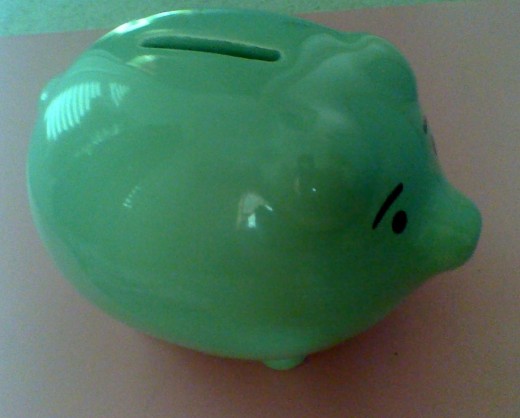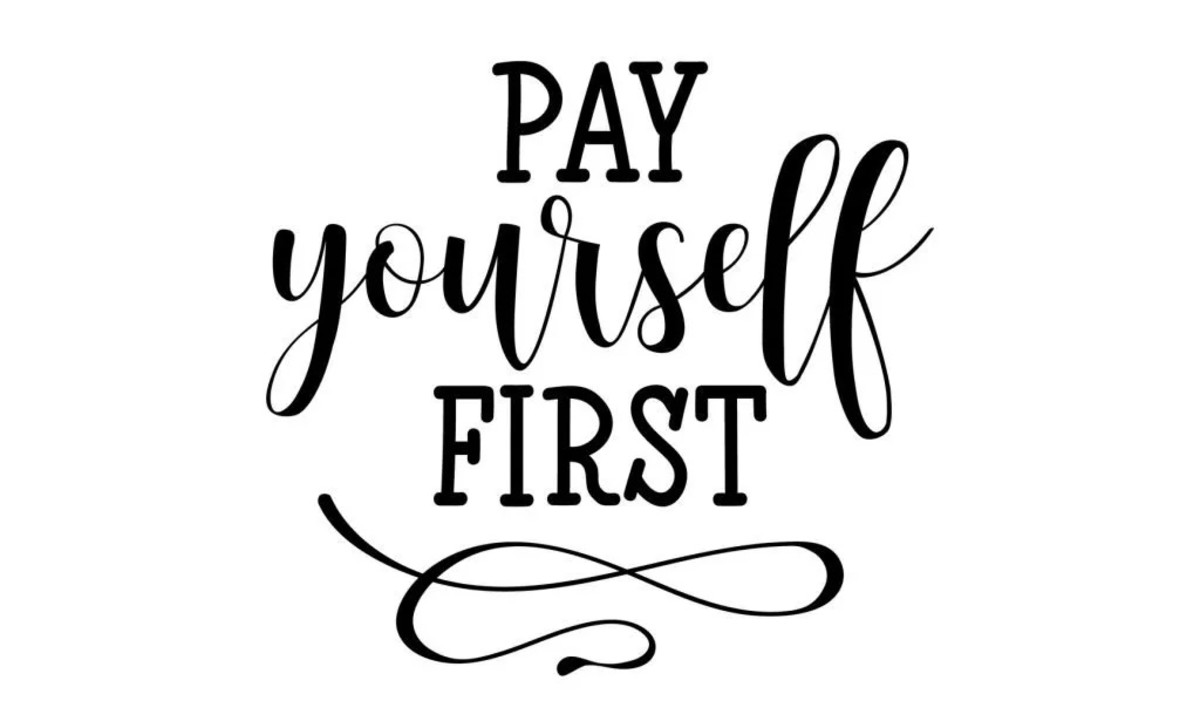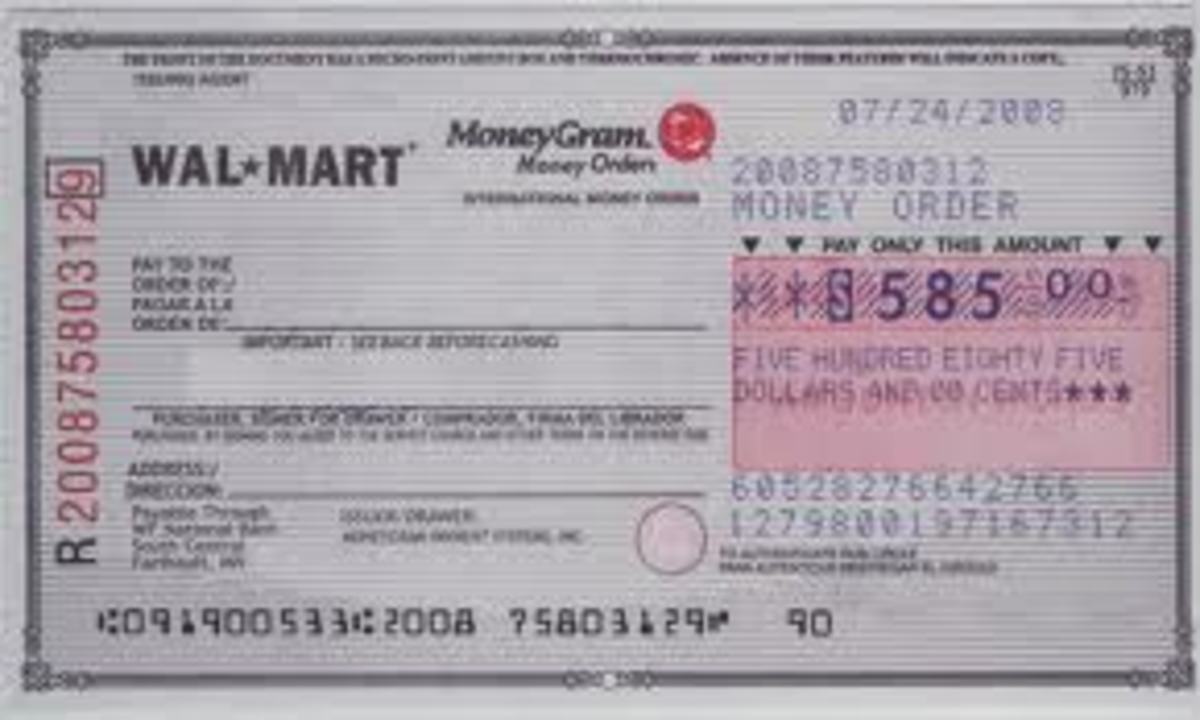There are Many Ways to Save and Prosper in the 21st Century Economy
Each day, your savings add up
Prologue
The hardest part of organizing our finances and gaining control of our financial health can be knowing where to begin. This hub is an outline of steps to take for evaluating where you are and determining where you would like to go. Throughout this hub are my suggestions for books available on Amazon.com that could help you bring what you have started to its natural conclusion.
A disciplined savings plan: Your first step toward financial prosperity and freedom ~

Develop a plan that works for you.
A. Faith
There is a spirituality to the human relationship with money. That relationship can be healthy or in need of healing. It is within everyone's power to have a healthy, peaceful relationship with money. Unlearning attitudes that have been passed down through generations may be necessary. Money itself is not evil, only greed is, and what we do with money can bring about significant positive changes in our lives and others' if handled well. It is important to have faith in ourselves and in our priorities, our heart's desires.
B. Goals
We all have dreams, or goals, about what we would like to do with money. You may want to write some of yours down now. Make a list of at least 10 things you would like to do with money if you could save more of what you earn. Make sure you distinguish which can be realized sooner (short-term) and which need more time to come to fruition (long-term). Then, have faith in yourself that you will be able to accomplish these goals, one day at a time.
C. How much do you make and how much have you saved?
1. Take a good look at how much of your income you have managed to save over the past year, five years, or decade. Do you contribute to a 401K plan with your employer? If not, what type of retirement account do you contribute to? The secret to creating a livable "nest egg" is to start early. The earlier you start, the lighter your contribution load each year, and the happier you will be in the meantime.
2. Do you contribute to your health benefits through deductions from your paycheck? If not, where are the funds for your health care coming from? If you do have a health care plan, either through your employer, the state, or independently, you are taking care of your health. That is a very important long-term investment.
3. Next, look at the rest of your pay. In addition to your before-tax contributions, what have you saved in a personal savings account? If this amount been at least 20% of your pay, you are prepared for an emergency. If not, it is time to reassess your financial habits.
A Family that Saves together enjoys more Face Time together ~

D. How much of your Income do you, or can you, save?
The first step to saving more money is to assess how much you truly have. How much "disposable income," beyond your monthly bills, do you have to spend on things you would like to have or do but are not necessary to your survival? That amount should be above and beyond 20% of your income, because that is the minimum amount of money you need to tuck away to have a comfortable cushion for handling an emergency.
*My definition of an emergency is a situation that is out of the ordinary, and requires an unplanned spending of money. Examples of such emergencies include car trouble that requires a mechanic, a repair needed on your home, an injury, or suddenly needing to pay for travel expenses to visit a sick relative.
If you have not begun using a paper and pencil, and a calculator, it may be time to do this now. There are lots of numbers to juggle and crunch, and the only way to keep in touch with your financial reality is to do the math. It will help with the re-assessment process. Here is a step-by-step outline of what numbers to look at and how to work with them.
1. Write down your "net" monthly income (your take-home pay).
2. Add up your monthly bills and subtract that total from your monthly income. The final number is the amount of your "disposable" income.
3. What percentage of your net income is your disposable income? Is it 20%? Is it at least 10%? If it is either one of these, or somewhere in between, you are off to a good start.
4. What can you comfortably tuck away without cramping your lifestyle? That is the money to start saving, immediately. Open a savings account if you have not done so already, and transfer your money there. If you do not see it in your checking/debit account, you will not spend it. Over the months, that number will add up, and you will start to see it building on itself, or "snowballing." That will give you a sense of accomplishment.
E. There are a variety of other ways to save
In addition to actually tucking money away, there are other ways to save your disposable income so that you have more to enjoy the activities that mean the most to you and your family.
1. If you have a family to support, involve them in this process. Let them know that there is not an endless supply of money for buying things. Are there things they are willing to do without, to make themselves, or find a way to earn their own money for?
Keeping Warm: Heating and electricity are the largest consumers of household income. Our heat is electric, so this is a double whammy to our wallets. We leave our thermostat at 62 and wear sweaters, cozy robes, and slippers during the winter months. In the summer, we cross-ventilate with open windows as much as we can before turning on the AC.
Home-Made Cards and Gifts: Can cards, gifts, and/or wrapping paper be made for friends and family? Craft stores sell blank card sets. The time spent is money saved, and joy multiplied if such artistic expression is something you feel you would not otherwise have much time to engage in.
Placing a jar on a shelf for everyone to contribute what they saved by making instead of buying could encourage you all to keep going. Placing coins there until it is full could help all family members to keep finding more ways to save money through completing do-it-yourself projects. Treating yourselves to a long-awaited family outing when that jar is full could be your reward, which has the potential to become habit-forming.
3. Less Clutter Means More Energy
Having less "stuff" around increases each person's energy level. Each object we have has an amount of energy to it, and too much stuff takes up air and space that we need to be both creative and productive. So, how much of what you have do you really need? How much of what you have is a result of relenting to marketing pressure, either from watching television or being called on the phone by strangers who could steal your identity?
a. Host a yard sale, or a neighborhood "block sale": Let others take home what you own in exchange for cash to save for a fun trip to a place you have not been before. You will enjoy the benefits of breathing in more oxygen and less dust, and the money can be saved for trying something new. I'm looking forward to the chance to try snow-shoeing with my daughter.
b. Give your old clothes to "Good Will": What we no longer fit into or want due to a change of taste can benefit those who have even less than we do. Bringing them to a thrift store makes more room in our closet and fills our heart with gratitude. There are more Americans who have begun to buy only "recycled" clothing instead of buying new ones. Does anyone in your family enjoy sewing? Fabric from old favorites can be recycled into new creations for wearing,...or at least new pot holders for the kitchen.
c. Seek alternatives to buying new things: When my daughter was two or three years old and we lived in Boston, a uniquely wonderful place called The Puppet Showplace Theater (at Brookline Village in Brookline, MA) was located around the corner from our home. I used to ask relatives to not send toys but to give money to my daughter for a puppet show and a post-show treat at the Kookoo Cafe , which is family-owned eatery up the street from the puppet theater. What a wonderful gift it was to be able to enjoy this educational resource with my emerging artist. She is now 6, and has a basket full of puppets that she loves to play with, and a flower marionette that she has developed a command of using. We attend puppet shows as often as we can in Central Massachusetts, but the experiences I was able to give her when she was younger were a source of shared pleasure that was rich in nutrients for her developing brain on many levels: spatial, mathematical, lyrical, literary, musical, physical stamina, coordination, memory, and artistic expression.
2. What can be cut back on in order to save more?
Instead of eating out so often, enjoying time eating at home may be more relaxing, and easier on your budget.
Making your own food: Does eating out fritter away much of your income? Is there something that you, and/or others in your household enjoy making that could save money? Purchasing reusable plastic leftover containers and taking your lunch to work at least 3 days a week could translate into some significant savings over time. Household "potlucks," where each member makes what they love for a meal, could make the effort more rewarding and fun. Doing so could also help you and your family save funds for an evening at a more pricey restaurant with better food by cutting out the interim cafe and "fast food" spending.
Grow your own food: And why stop at the kitchen? Take it outside! Is there anyone in your family who loves to garden? My personal "motto" is: the best food is home-grown . I have provided a link to my web site, where you could order my guide to growing your own fruits and berries. You could also save money by purchasing it on Amazon . Not only will the food you grow taste better, if you grow it organically it will have more nutritional value.
Home-Grown food is Freshest and Most Nutritious ~

Alternatives to buying more new stuff:
4. Entrepreneurship: Making money while doing what we love is also a wonderful way to save, by selling our unique creations either on a web site of one's own making, or on Ebay. I have a friend in Florida who does this to send her boys to basketball camp each year. You can do it at your own pace, with no "boss" to answer to.
5. Bartering: Exchanging goods and services with others has become more popular in the 21st century, and may become a permanent part of the world's emerging new economy. I have a friend who exchanges his handyman work with a neighbor who is a good web master and has set up a site for him to advertise his carpentry services online. Living in a co-housing community, there is an abundance of that type of bartering happening on a daily basis. Some neighbors exchange favors for baked desserts. The community also shares tools and other resources so that those who do not have an item when they need it often do not need to purchase it. They can borrow it, and loan something that they do have to others.
6. Setting up Cooperatives: More people have set up cooperatives for services that help them save money. Examples of such arrangements are for rotating child care with trusted neighbors and carpooling to work, or at least to the train station. Why not start one for other types of things?:
a. Sharing tools
b. Gardening for a shared harvest
c. Neighborhood potluck, or "stone soup"-type meals
d. Raising chickens for fresh eggs
e. Beekeeping for pollination and a share in the honey
f. Raising sugar maples for 100% pure maple syrup
g. Exchanging time in a guest room for another t
ype of favor (my mother does this for friends)
Stretching Your Savings as Far as they can Go:
- The Freecycle Network
An online resource for finding a local source for the items on your wish list. in exchange for giving away things you no longer need or want.
F. Reach Out
The first step in accomplishing our financial goals is to take an honest look at our situation and how we can improve it. The next step is to ask for support with the endeavor from those who are nearest and dearest to us. Next, find ways to save by doing something yourself for less, or exchanging "talents" with friends and neighbors. Everyone benefits from such activities. If more people did this, instead of caving in to the message of "buy buy buy," our economy would straighten out. One of the first steps we have taken is to keep our television out of sight and to play with our daughter. outside or inside as the weather permits. I also follow a group online called the Campaign for a Commercial-Free Childhood (CCFC). They can be found on Facebook . Saving is a values-based activity, and children learn the strategies they develop from their primary caregivers. Let us be an effective resource for them, and learn from each other. In the meantime, I also recommend following "Wife Who Saves" on Hub Pages.
This content is accurate and true to the best of the author’s knowledge and is not meant to substitute for formal and individualized advice from a qualified professional.
© 2011 Karen A Szklany








